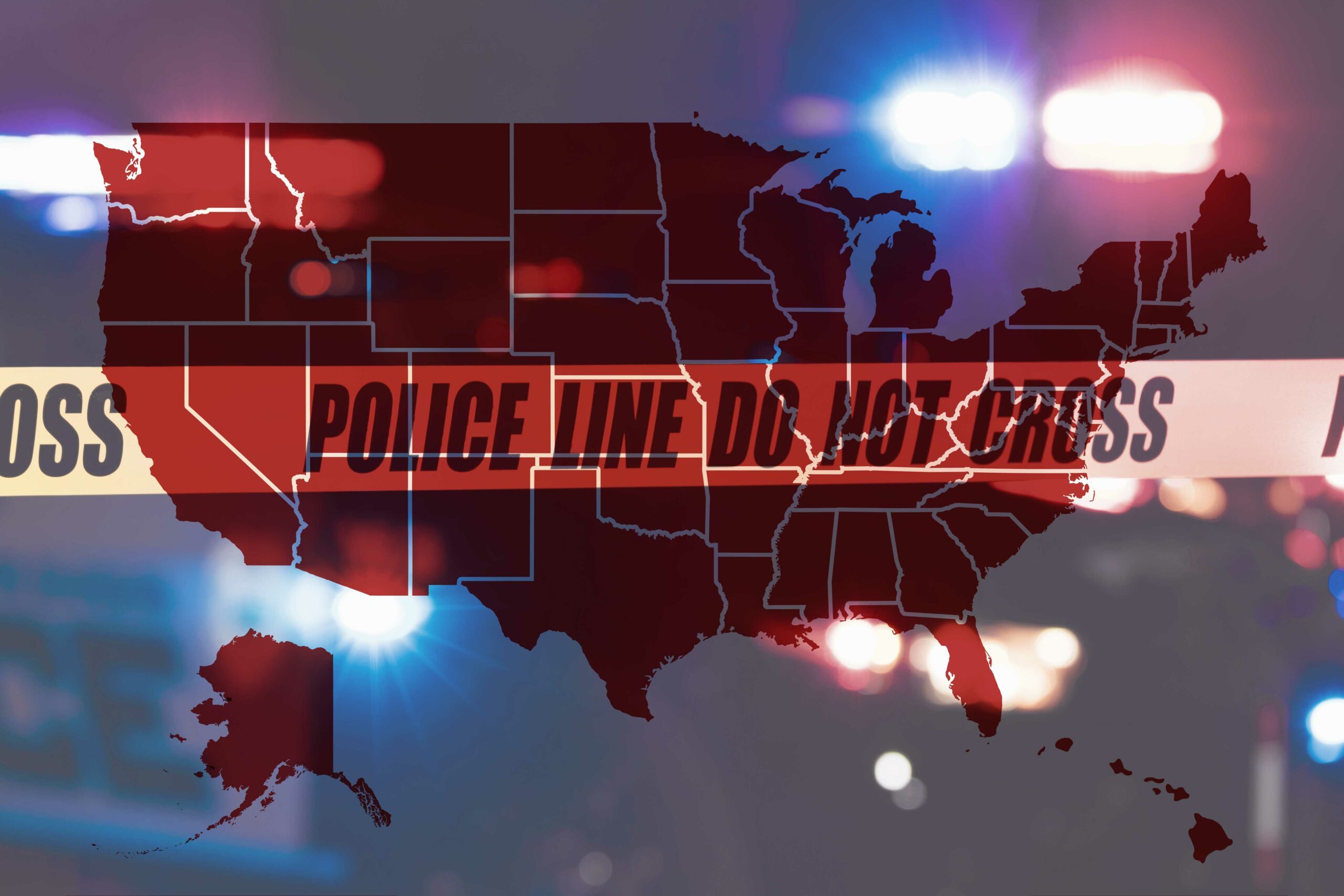Where does your state rank on the safety scale? The answer may surprise you.

New Study: This Is the Most Dangerous State in America

Deciding where to live is likely one of the biggest decisions you’ll ever make for yourself and for your family. And living in a safe place is no doubt the most important factor when considering a particular city or state. So how safe is the state you live in? WalletHub recently ranked all 50 states on a number of factors to determine the most dangerous—and safest—places to live in America.
Read on to find out the best state to live in if safety is your No. 1 concern, the most dangerous state in America and how your state stacks up.
Get Reader’s Digest’s Read Up newsletter for more travel, tech, money, humor and fun facts all week long.
How were the most dangerous states determined?
WalletHub compared all 50 states across five key factors: personal and residential safety, financial safety, road safety, workplace safety and emergency preparedness. The team of experts then divided the data into 52 more detailed metrics to create a 100-point scale.
Some metrics were weighed more than others. Take, for instance, the category of personal and residential safety, which includes things like theft, assault, hate crimes, mass shootings and murder. It could earn 40 out of the possible 100 points, while the other metrics could earn up to 15 points apiece.
The higher the score, the safer the state.
Which state is considered the most dangerous?

Louisiana received the lowest score (33.27), making it the most dangerous state to live in, according to WalletHub’s criteria. The state ranked 40th in personal safety, 46th for most assaults per capita and 49th for both financial safety and emergency preparedness.
The state’s rank isn’t a huge surprise, unfortunately. Louisiana has one of the highest homicide rates in the United States, with 19.8 murders per 100,000 people. It also ranks as the second-poorest state in the nation and third in the country for its share of children living in poverty, according to the Louisiana Budget Project’s 2022 census, creating dangers of food insecurity, personal safety and inadequate housing.
What other states round out the top five?
The most dangerous places to live in the nation, according to WalletHub’s study, are all in the southern United States. Here are the top five, starting with the least safe state:
- Louisiana
- Mississippi
- Texas
- Arkansas
- Florida
What state is the safest?

The safest state to live in, as determined by WalletHub, is Vermont. According to the data, nearly 77% of people with children in Vermont believe they live in safe neighborhoods. Plus, the state ranked low on rates of aggravated assault, theft, murder and nonnegligent manslaughter. It also has safe roads, both in terms of quality and low pedestrian fatalities per capita.
When it comes to job security and employment, Vermont ranked No. 1 in workplace safety and No. 2 in financial safety, as it has one of the lowest unemployment rates in the country, as well as one of the best job-growth rates. (And as previous studies have pointed out, it also offers good work-life balance.)
According to WalletHub analyst Chip Lupo, the safest states in America protect their residents from harm in a multitude of different ways, “from keeping crime rates low and maintaining safe roadways to having strong economies and job markets that prevent people from falling into dangerous financial situations.”
The states are made safer, Lupo says, by the important work done by people within their communities, like those who form neighborhood-watch committees. Having lots of people within an area who choose to become firefighters and EMTs helps make a state even safer.
What’s your state’s safety rank?
If you’re not one of the many Americans looking to relocate this year, you may be more concerned with where your state falls in the safety ranking. Here’s how WalletHub rated every state, from the safest state to the most dangerous in the nation.
- Vermont
- New Hampshire
- Maine
- Massachusetts
- Utah
- Hawaii
- Connecticut
- Minnesota
- Rhode Island
- Wyoming
- Idaho
- Indiana
- Iowa
- Arizona
- Virginia
- Maryland
- New Jersey
- Washington
- Wisconsin
- Delaware
- Kentucky
- Oregon
- North Carolina
- New York
- Alaska
- Michigan
- North Dakota
- Pennsylvania
- South Dakota
- West Virginia
- Illinois
- Ohio
- New Mexico
- Nebraska
- Kansas
- Nevada
- California
- Montana
- Missouri
- Tennessee
- South Carolina
- Georgia
- Colorado
- Alabama
- Oklahoma
- Florida
- Arkansas
- Texas
- Mississippi
- Louisiana
What should you do with the safety rankings?
Safety is just a single element to consider when making a move—albeit a very important one. Depending on your circumstances or lifestyle, you might factor in things like cost of living, school quality and even how disability-friendly a city is.
Still, safety rankings can help people make thoughtful choices about where to live. WalletHub expert Andrew Burnstine, PhD, an associate professor at the College of Business and Management at Lynn University, says that while no area is free from risks, informed decision-making can help mitigate threats. “By analyzing crime trends, environmental risks, workplace safety and economic stability, individuals can find a balance between safety and lifestyle, ensuring a safer, healthier living environment,” he says.
Why trust us
At Reader’s Digest, we’re committed to producing high-quality content by writers with expertise and experience in their field in consultation with relevant, qualified experts. We rely on reputable primary sources, including government and professional organizations and academic institutions as well as our writers’ personal experiences where appropriate. We verify all facts and data, back them with credible sourcing and revisit them over time to ensure they remain accurate and up to date. Read more about our team, our contributors and our editorial policies.
Sources:
- WalletHub: “Safest States in America (2024)”
- CDC: “National Center for Health Statistics”
- Louisiana Budget Project: “Census 2022”























